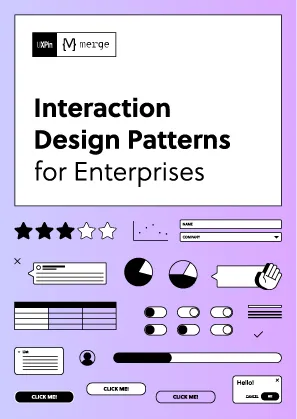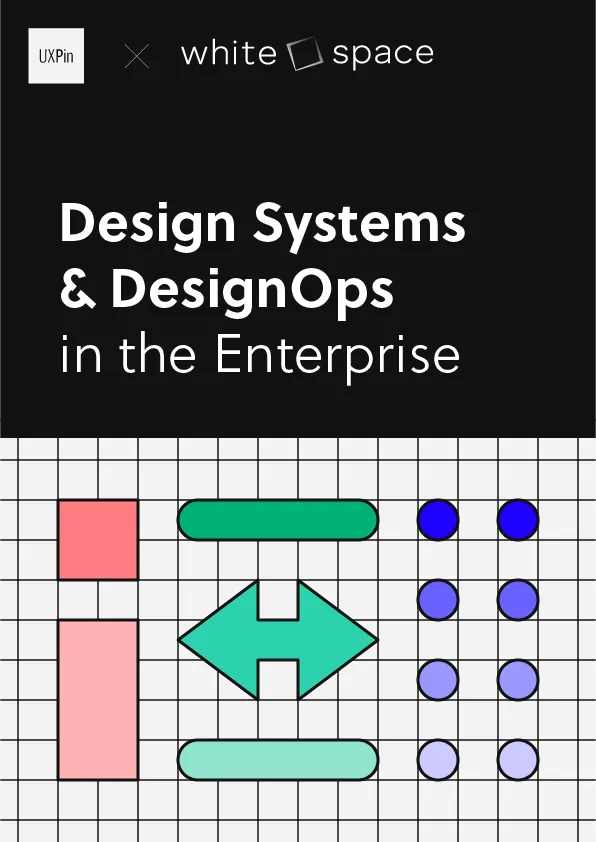Looking to create apps for web, mobile, and desktop with minimal effort? This article compares two tools: Quasar Framework and UXPin, both designed to simplify cross-platform prototyping. Here’s what you need to know:
- Quasar Framework: A Vue.js-based tool for developers that builds apps from a single codebase. It supports web, iOS, Android, desktop (via Electron), and browser extensions. It includes over 80 UI components, real-time updates during development, and tools for integrating APIs and state management.
- UXPin: A design-focused platform using React components for high-fidelity prototypes. It supports web-based prototypes that behave like finished products, integrates with libraries like Material-UI, and allows real-time collaboration with stakeholders.
Quick Comparison
| Feature | Quasar Framework | UXPin |
|---|---|---|
| Platform Support | Web, mobile, desktop, browser extensions | Web-based, responsive across devices |
| Codebase | Single Vue.js codebase | React-based prototypes |
| Components | Built-in Vue components | React libraries (Material-UI, Tailwind, etc.) |
| Collaboration | Version control integration | Real-time editing, feedback tools |
| Pricing | Free (open source) | Free tier; $119/editor/month for Company plan |
| Learning Curve | Requires Vue.js knowledge | Designer-friendly, no coding needed |
Bottom Line: Choose Quasar if you’re a developer aiming for multi-platform deployment. Opt for UXPin if you’re a designer prioritizing collaboration and realistic prototypes.
Vue.js Nation 2024: Quasar – One Code Base, All The Platforms! by Luke Diebold
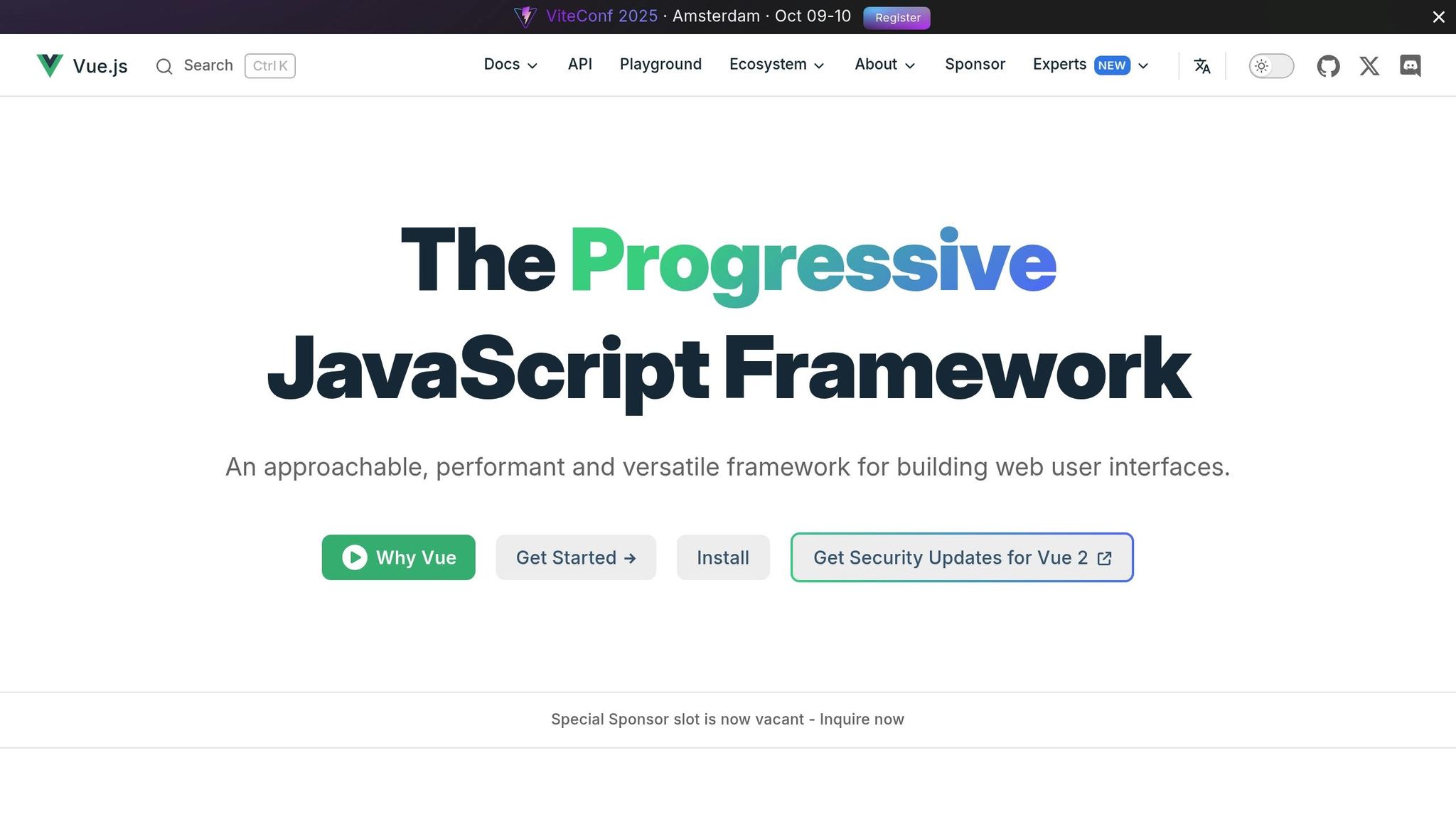
1. Quasar Framework
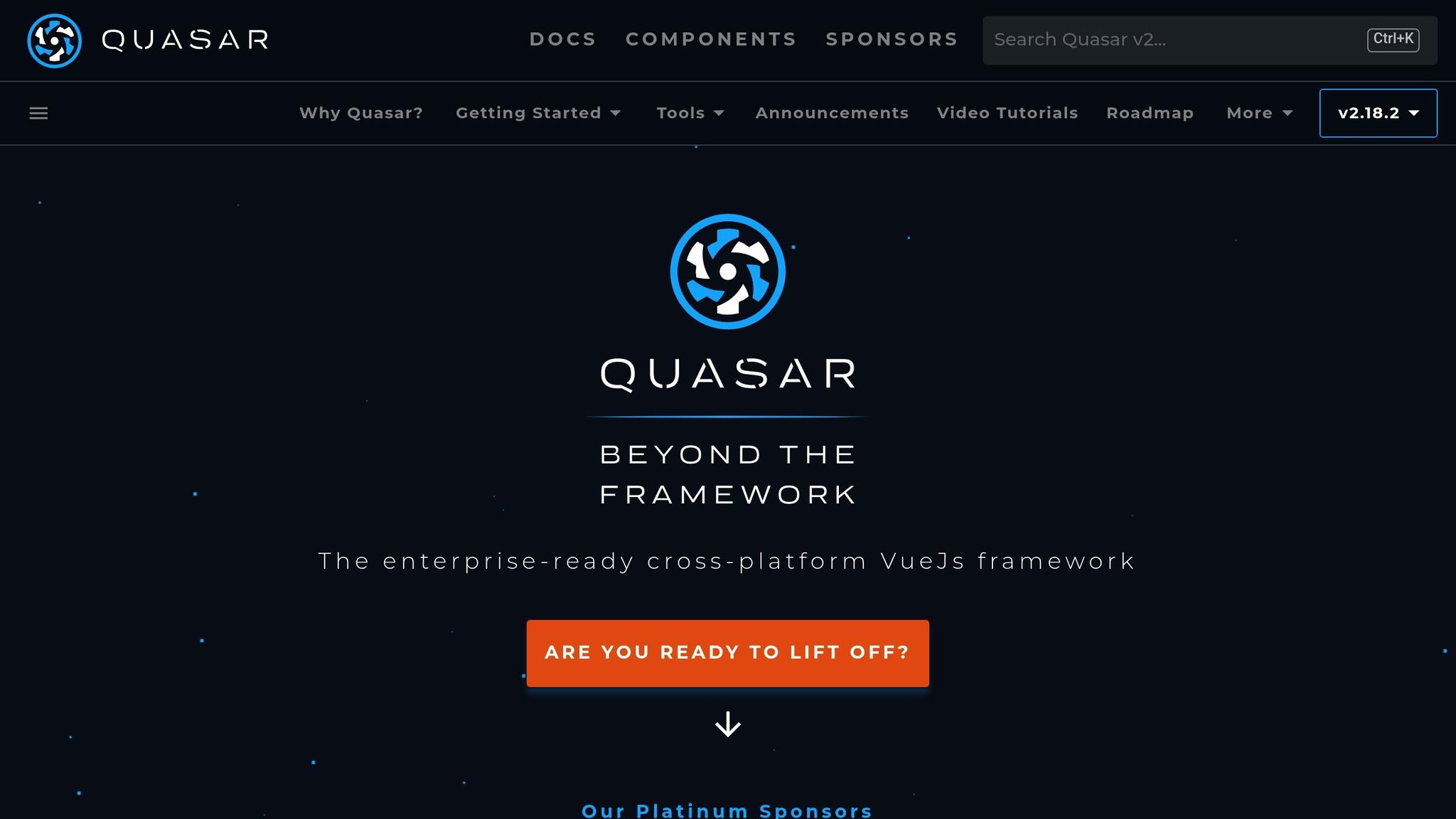
Quasar is a Vue.js-based framework designed to create cross-platform applications, starting from functional prototypes all the way to production-ready solutions. Its core philosophy, "write once, deploy anywhere", allows developers to build applications that work seamlessly across multiple platforms.
Platform Support
One of Quasar’s standout features is its ability to target multiple platforms using a single codebase. Developers can deploy their applications to web browsers, iOS and Android mobile devices, desktop environments via Electron, and even as browser extensions.
Quasar takes care of platform-specific styling and optimizations automatically. For instance, it uses Material Design for Android apps and adheres to Apple’s Human Interface Guidelines for iOS. Mobile platforms benefit from Cordova or Capacitor integration, which allows access to native device features. For desktop applications, Quasar leverages Electron, while web deployments include progressive web app (PWA) features like offline access and push notifications.
Component Libraries
Quasar offers a library of over 80 Vue components, covering a wide range of UI needs. These components are responsive and customizable, thanks to an SCSS-based theming system. For example, the QTable component simplifies data handling with built-in features like sorting, filtering, and pagination. Form components include validation tools, while layout components utilize CSS Grid and Flexbox for responsive designs.
Customization is a breeze with Quasar’s theming capabilities. Teams can define design tokens to ensure consistent branding across all platforms. This extensive component library not only speeds up the prototyping process but also ensures a polished and professional look for applications.
Prototyping Workflow
Quasar’s development workflow is designed for speed and efficiency. With features like hot module replacement, developers see real-time updates across connected devices and browsers as they code. The Quasar CLI automates platform-specific build processes, whether it’s generating APK files for Android or DMG installers for macOS.
Prototypes can include real-world functionality by integrating APIs, managing state with Vuex, and handling navigation with Vue Router. This makes it possible to create prototypes that closely resemble the final product in terms of behavior and functionality.
Collaboration Features
Quasar is built with teamwork in mind. It integrates with version control systems, allowing multiple developers to work on the same project without stepping on each other’s toes. Vue’s single-file component structure helps reduce merge conflicts during collaborative development.
The framework also simplifies sharing and feedback. Prototypes can be deployed to staging servers or static hosting platforms, making it easy for clients or stakeholders to review. Additionally, Quasar can generate interactive documentation for its components, showcasing their properties and usage examples. This documentation doubles as a living style guide, streamlining both prototyping and development processes.
2. UXPin
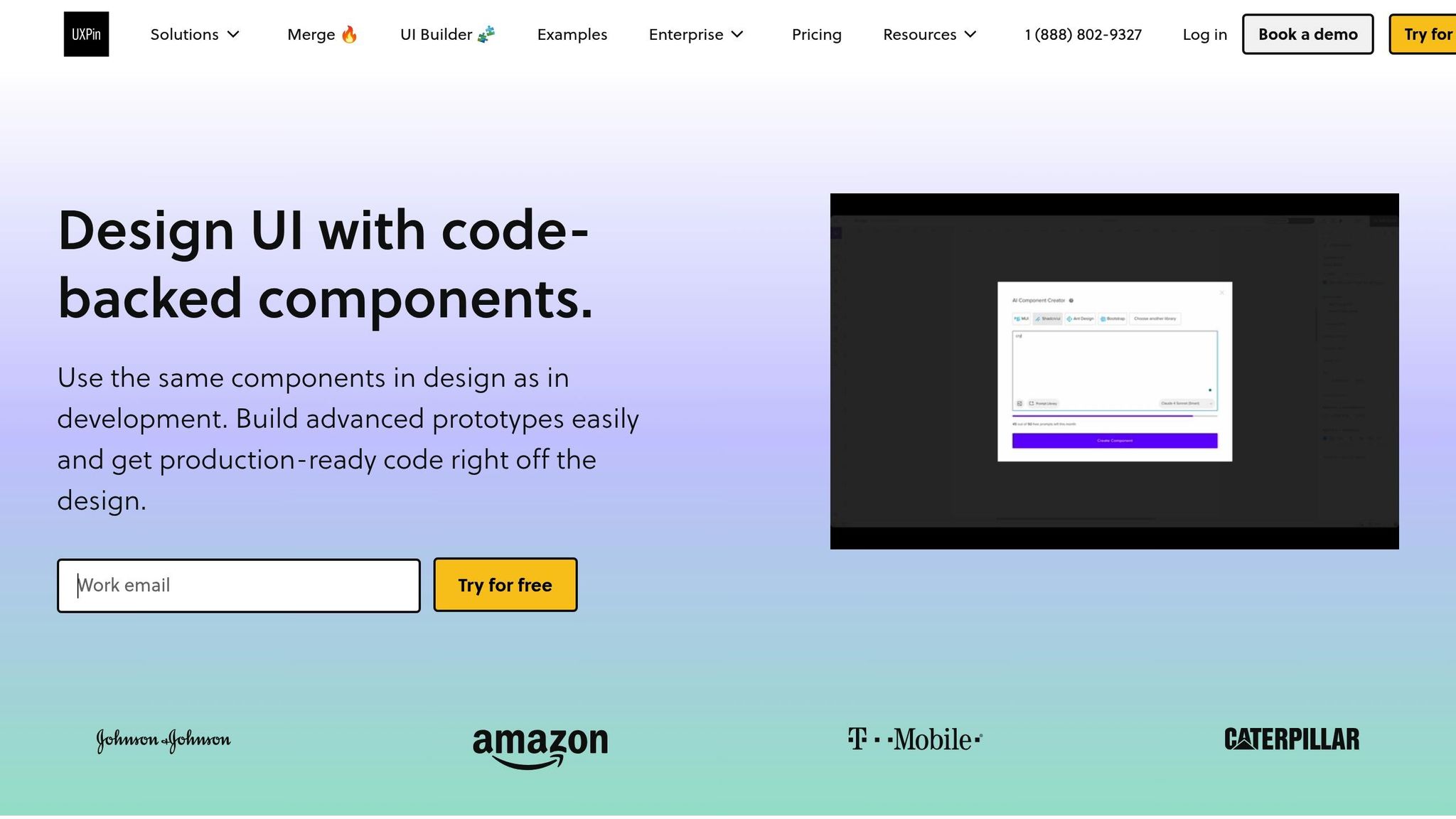
UXPin is a design and prototyping platform that stands out by using actual React components to create interactive prototypes. These prototypes aren’t just visual representations – they behave like fully functional applications, making the design process more aligned with development.
Platform Support
UXPin’s prototypes, powered by React, are web-based and run smoothly across browsers, tablets, and mobile devices. There’s no need for separate builds for different platforms, as the prototypes are inherently responsive. Designers can preview their work in real-time across various screen sizes and orientations, ensuring that their designs look and function as intended on any device.
Component Libraries
One of UXPin’s key strengths is its integration with React component libraries, such as Material-UI (MUI), Ant Design, and Tailwind UI. These libraries consist of production-ready components, allowing prototypes to include real interactions, form validations, and even data handling.
For teams on the Company plan ($119 per editor per month), UXPin supports custom component libraries via Storybook and npm. This means teams can import their own React components, ensuring consistency between prototypes and the final product. This approach eliminates the common gap between design and development, as the same components used in the prototype will appear in the actual application.
Another standout feature is UXPin’s AI Component Creator, available in the Merge AI plan ($39 per editor per month). This tool can generate React components from simple text descriptions, speeding up the prototyping process by automating the creation of functional components that meet specific design needs.
Prototyping Workflow
UXPin’s prototyping workflow allows designers to create interactive, code-backed prototypes that closely mimic the behavior of the final application. Using tools like conditional logic, expressions, and variables, designers can add complex interactions without writing any code. These prototypes can handle user input, display dynamic content, and even integrate APIs to pull in live data.
The platform’s design-to-code workflow simplifies the handoff between designers and developers. Since UXPin prototypes are built with actual React components, developers receive specifications that can be directly implemented. This eliminates the guesswork in interpreting design files and ensures the final product matches the prototype down to the pixel.
UXPin also supports advanced interactions that go beyond basic click-through prototypes. Designers can create multi-step forms, sortable data tables, and intricate navigation flows that replicate real-world application behavior.
Collaboration Features
Collaboration is seamless with UXPin. Teams can edit prototypes simultaneously in real time, leave comments, and manage feedback through stakeholder approval workflows. The platform also offers version history – 30 days for the Company plan and unlimited for the Enterprise plan – making it easy to track changes and revert if needed.
To keep the workflow smooth, UXPin integrates with tools like Slack, Jira, and Storybook. These integrations ensure that design updates are automatically shared with relevant team members, bridging the gap between design, development, and project management.
sbb-itb-f6354c6
Pros and Cons
After diving into the capabilities of each platform, here’s a side-by-side comparison that highlights the key trade-offs between Quasar Framework and UXPin. Each has its own strengths and limitations, making the choice largely dependent on your team’s goals and expertise.
| Aspect | Quasar Framework | UXPin |
|---|---|---|
| Platform Support | Deploys a single codebase to web, mobile, and desktop platforms. | Web-based prototypes designed to work responsively across all devices. |
| Integration Ease | Requires familiarity with Vue.js; setup involves a single configuration file. | Offers direct integration with React component libraries and popular design tools. |
| Component Reusability | Includes a robust built-in component library and a plugin ecosystem. | Provides production-ready React components, custom library support, and AI-generated assets. |
| Team Collaboration | Supports collaboration via version control, focusing on development workflows. | Features real-time editing, approval workflows, and tools for gathering stakeholder feedback. |
| Development Speed | Speeds up development by 30% with a unified codebase. | Removes design-to-development handoff delays entirely. |
| Learning Curve | Has a steep learning curve, requiring Vue.js expertise. | Designer-friendly interface with no coding knowledge needed. |
| Cost Structure | Open-source and free to use. | Free tier available; Company plan costs $119 per editor per month. |
Key Takeaways
Quasar’s lightweight footprint (just 437 KB) enhances load times and can reduce maintenance costs by up to 40%. This makes it an excellent choice for teams focused on performance and seamless multi-platform deployment from a single codebase. However, its reliance on advanced Vue.js knowledge might pose a challenge for design-centric teams without dedicated developers. Complex integrations can also require additional setup compared to tools that are ready to use out of the box.
On the other hand, UXPin shines in collaborative design workflows. Its real-time editing and automated infrastructure management streamline stakeholder involvement, making it ideal for design teams looking to work closely with clients or internal teams. That said, UXPin’s reliance on React may not suit teams using other frameworks, and the pricing – especially the $119/editor/month Company plan – can be a considerable expense for larger organizations.
Ultimately, the choice comes down to your team’s priorities. Quasar is well-suited for multi-platform product launches, while UXPin is tailored for teams aiming to enhance collaboration and streamline design processes.
Conclusion
Deciding between Quasar Framework and UXPin comes down to your team’s specific goals, as each tool shines in different areas – Quasar stands out for multi-platform development, while UXPin excels in collaborative, code-integrated design workflows.
Quasar Framework is a great fit for development teams focused on creating complex applications that run seamlessly across web, mobile, and desktop platforms. Its single codebase approach simplifies multi-platform deployment, making it a strong choice for startups or companies aiming to expand their reach efficiently. However, it’s worth noting that teams may need to invest time in mastering Vue.js to fully leverage Quasar’s capabilities.
On the other hand, UXPin is tailored for design teams seeking a streamlined way to prototype and collaborate. Its real-time, code-backed prototyping features make the transition from design to development smoother. With an intuitive interface, built-in React component libraries, and AI-powered design tools, UXPin empowers teams to create interactive prototypes quickly, even without deep coding expertise. This makes it an excellent choice for teams prioritizing rapid prototyping and seamless collaboration.
FAQs
How do Quasar Framework and UXPin differ in platform support and component libraries?
Quasar Framework and UXPin each shine in their own domains, catering to different needs in the development and design process.
Quasar Framework is a Vue.js-based framework built for developers who need to create cross-platform applications from a single codebase. It supports a variety of platforms, including web, mobile (iOS and Android), desktop (Windows, macOS, Linux), PWAs, and SSR. With over 70 highly customizable Material Design components, Quasar focuses on simplifying application development across multiple platforms.
Meanwhile, UXPin is designed with designers and developers in mind, offering tools to build interactive, code-powered prototypes. It features scalable, pre-designed component libraries and supports integration with custom React components. UXPin prioritizes design consistency, team collaboration, and a smooth workflow between design and development, making it a go-to choice for prototyping and creating design systems rather than building applications directly.
How does the Quasar Framework simplify cross-platform app development, and what are the key advantages?
The Quasar Framework makes cross-platform app development much more straightforward. With just one Vue.js codebase, developers can build applications that work seamlessly across web, mobile, and desktop platforms. It supports deployment to a wide range of systems, including Android, iOS, Windows, macOS, and Linux. This eliminates the need for separate codebases, saving time and simplifying the development process.
This unified approach brings key advantages like shorter development timelines, reduced costs, and simplified maintenance. By reusing the same code for multiple platforms, development teams can concentrate on enhancing the user experience and delivering polished, high-quality applications efficiently. It’s a smart choice for businesses looking to roll out apps quickly while ensuring consistency across various devices.
How should teams decide between using the Quasar Framework and UXPin for cross-platform prototyping?
When choosing between Quasar Framework and UXPin, the decision hinges on your team’s primary goals.
Quasar Framework is tailored for creating fully functional, cross-platform applications using a single codebase. It offers native support for multiple platforms and includes tools like a CLI to streamline project management. This makes it an excellent choice for teams focused on development-heavy workflows.
In contrast, UXPin excels in building and testing interactive prototypes. It’s particularly suited for teams that prioritize design validation, user experience testing, and collaboration during the early stages of product development.
Ultimately, your choice depends on whether your team’s priority lies in app development or refining the user experience through prototyping.
